Look around the automotive industry, and the promises to improve fuel efficiency and reduce emissions all have very similar solutions.
Hybridization, small displacement engines with turbochargers, and utilizing CVTs are all common solutions, but somehow, Mazda has managed to top the entire industry in corporate average fuel economy over the past few years, despite not using any of the aforementioned technology.
When it comes to showing up the rest of the industry, the automaker is just getting started. There’s more to come in the near future and that hard-to-miss matte black Mazda prototype we’re driving is hiding Mazda’s blueprint for success with something called Spark Controlled Compression Ignition. If it sounds complex, that’s because it really is, but fortunately, Mazda has dubbed it SkyActiv-X. Simply put, it combines combustion technology from diesel engines and the potency of gasoline engines to make a more efficient motor.
The 2.0-liter engine under the hood of that prototype is using next-generation internal combustion engine technology and features as much power as the brand’s 2.5-liter four-cylinder engine (about 180 horsepower and 170 pound-feet of torque) offered in the Mazda3, all while being 20 percent more efficient than the base (and less powerful) 2.0-liter engine found in the same car, which already earns up to 32 mpg combined.
The Human Touch and SkyActiv-X
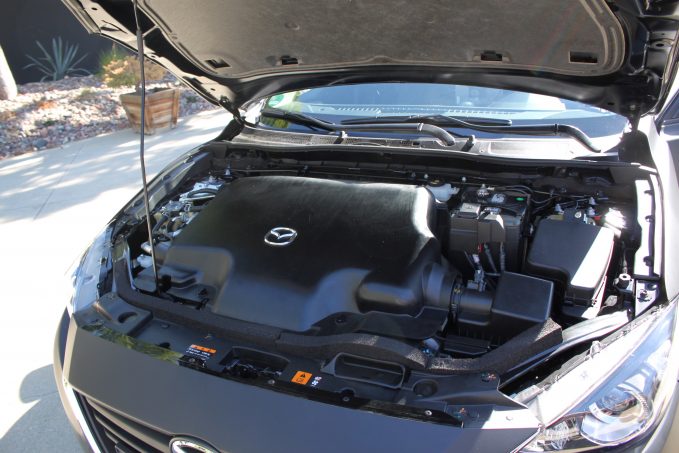
Ten years ago with the Sustainable Zoom-Zoom policy and the first-generation SkyActiv designs that followed, the Hiroshima-based automaker boldly suggested that it would be in the position it’s in now, in terms of having the industry’s best total fuel economy. Mazda says the human-focused approach to car design is what allowed it to reach this level. By avoiding tech that disrupts the connection between driver and machine like hybridization, small displacement turbos, and CVTs, the automaker is able to focus on making its cars lighter and more efficient — all while maintaining excellent driving dynamics. From there, advanced engines with high compression ratios followed, along with a reduction in mechanical friction and other changes like low-rolling resistance tires have helped to make the cars even more efficient.
As a result, 2017 Mazdas are 30 percent better on fuel than their 2007 counterparts, and the future’s looking even better with that SkyActiv-X engine. The X stands for the intersection of gas and diesel technology. Gasoline engines typically utilize a spark to ignite the combustion chamber, while diesels typically use compression ignition. SkyActiv-X uses both systems to achieve a leaner air-to-fuel mixture and higher compression ratio, both essential in delivering a more fuel-efficient gasoline engine.
What’s it Like to Drive?
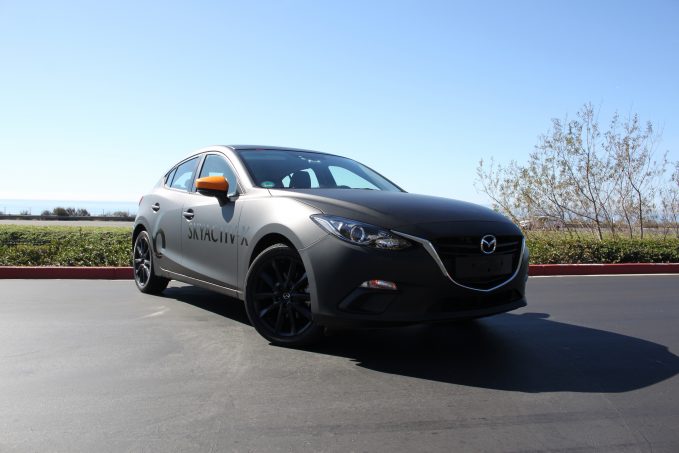
Our SkyActiv-X prototype never felt like it had a fuel-economy focused powertrain, which is to say that the car was still engaging and satisfying to drive. The car still had the hallmarks of a typical Mazda. There was an immediate connection, which is a staple of cars like the Mazda MX-5. Leaning on the gas pedal resulted in a quick reaction, as the car gets going almost instantly. That can be said while the car is in almost any gear.
In fact, like a turbocharged car, the SkyActiv-X engine has its peak torque arrive early in the rev range, around the 2,000 rpm mark, but it stays punchy. It’s designed to be driveable anywhere in the rev-range. But unlike a turbocharged engine, there’s a strong sense of linear acceleration and the drop off in power is less abrupt. Unlike a turbo engine, however, it doesn’t need premium fuel, although it can take advantage of higher octane gas.
ALSO SEE: We Explain Mazda’s Fancy New SkyActiv-X Engine Tech in Layman’s Terms
Fun to drive, responsive and efficient — it’s a complete contrast to other fuel-economy focused vehicles on the market, and when combined with the rest of the improvements coming in Mazda’s next-generation vehicles, it showcases a promising future for the brand. Alongside the new engine will be new transmissions with shorter drive ratios that will allow even more engagement. There’s also going to be further improvements through the chassis to ensure the car is never boring to drive.
How it Works (in Simple Terms)
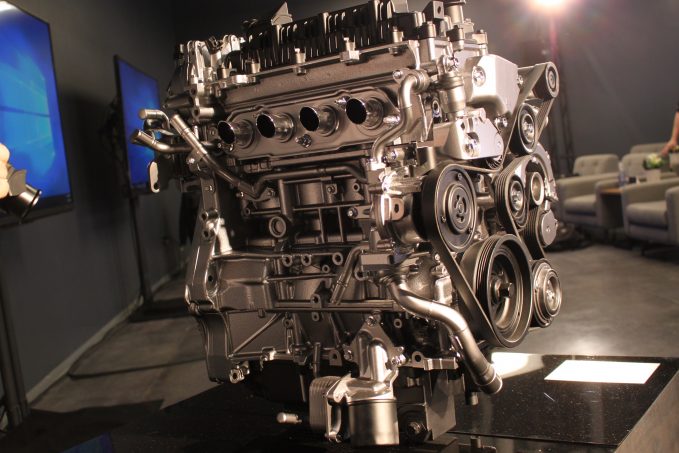
But let’s focus on the engine. There are a couple important facts to share before we go any further. First, compression ignition is when the air and fuel mixture is squished really, really tightly until it explodes. It’s faster than a normal spark-plug managed ignition, but can be a bit spontaneous and hard to control, which causes engine-damaging knocks. Second, a lean (meaning more oxygen than gas) air and fuel mixture is important because it burns cooler, and makes less NOx (aka pollution), but it can be harder to ignite lean mixes.
The SkyActiv-X engine features both compression ignition and a spark plug, allowing more control than just compression ignition alone. Through the use of fuel injectors to swirl the fuel mix in a particular way in the cylinder chamber, there is a less lean (also known as rich) mixture near the spark plug, which can then be ignited and cause a chain reaction with the lean mix found throughout the rest of the chamber. The result is a more efficient, controlled combustion of gas. This lean mix happens with some help from a discreet supercharger that forces extra air into the mix.
The engine is designed to be more efficient through a wider range of loads and engine speeds, but there’s a chance that rich mixtures can ignite spontaneously, so there are sometimes when regular spark ignition combustion will do the trick. To decide when to use which type of combustion, the engines have in-cylinder pressure sensors.
SkyActiv-X More than Engines
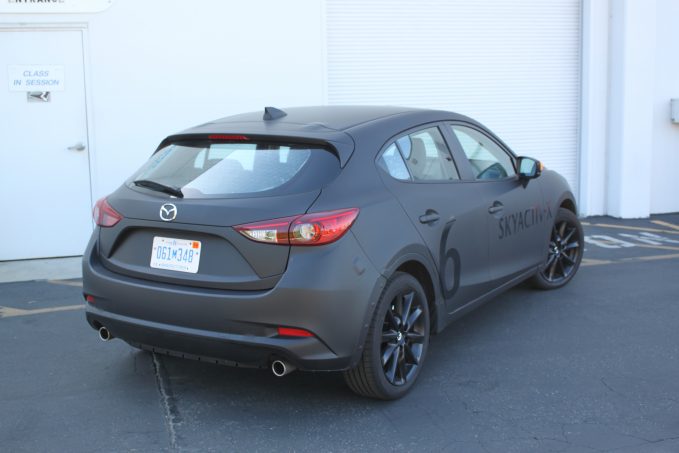
The prototype we drove also features a few other important elements of Mazda’s next-generation vehicles. To Mazda, the SkyActiv concept is more than just an engine, transmission, or chassis. It’s about making the driver feel natural, which involves the whole car including the seats, noise levels, suspension and more. The automaker has proven its ability to connect the driver to the car and the next-generation vehicles will continue that tradition.
We’ll see the SkyActiv-X technology hitting vehicles as soon as next year, sometime when the next-generation Mazda3 arrives. No one in this industry is standing still, though. Automakers around the world are looking to reduce fuel usage, and that can be achieved through all kinds of technologies. But based on this quick test and its recent track record, Mazda will still be able to deliver an engaging car that’s also efficient.


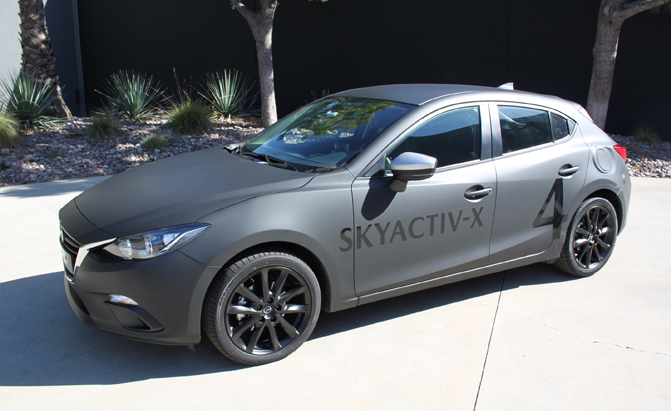
Leave a Reply